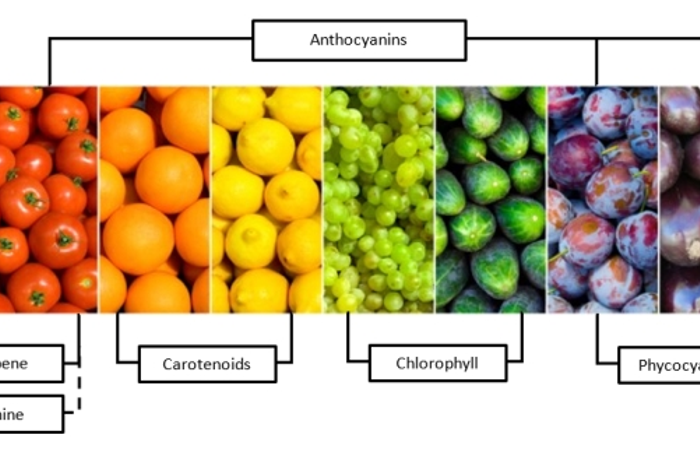
How to Switch from Artificial to Natural Colors
Natural vs. artificial coloring has been a hot topic among industry professionals and home cooks alike. At CuliNex, we let the true colors of food ingredients shine by selecting ingredients carefully and testing the least harsh processing methods, but there are many situations where products may benefit from a little boost of natural coloring. Here are a few things to keep in mind when formulating with natural colors or switching coloring systems from artificial/synthetic to natural/plant based.
A Little Color Primer
When working with suppliers, customers, and consumers, using the right words to convey your needs and uses for color in your project can make all the difference. The term ‘natural color’ is not used by the FDA when defining colors safe for use, but rather the FDA splits colors into two categories: those that require certification and those that are exempt from certification. Colors that require certification are those that are man-made and are either synthetics or lakes (a pigment created from precipitation with a metallic salt). Colors that are exempt from certification are those that are derived from natural sources (plant/plant parts, animals, fungi or microbes) or the man-made counterparts of these natural derivatives. All added colors, regardless of being natural or synthetic are considered additives by the FDA and must be labeled as such.
Natural Color Compounds & Common Sources

Common sources:
- Anthocyanins – beets, red cabbage, berries, grapes
- Carmine – chochineal extract (Dactylopius coccus costa (Coccus cacti L.))
- Carotenoids – turmeric, saffron, carrots, b-carotene
- Chlorophyll – alfalfa
- Lycopene – tomato
- Phycocyanins – spirulina extract
Understanding the Food Matrix
Always try to select natural color products for your specific food matrix. Unlike most synthetic colors, natural colors are very sensitive to heat, pH, light, oxygen and other environmental factors. Therefore, temperatures, pH, other processing parameters, storage conditions, and packaging all become extremely important to keep in mind when choosing natural colors. What works for one application, may not work well for another and each color may behave differently in the same matrix depending on the supplier’s formulation and specific product attributes.
For example when a natural red color derived from a plant-based anthocyanin, such as red cabbage juice, is added to a product with an acidic pH it will appear red. But when added to the same product with a neutral pH it will appear violet, and furthermore, when it is added to the same product with a basic/alkaline pH, it will appear blue. By only changing one variable of the product, color can change dramatically so trying to use the same color from product to product can be difficult. Solubility of natural colors are also of concern as many are water soluble, especially the concentrated plant juices and extracts.
Understanding Flavor Impact
Many natural colors are derived from plant extracts using concentration methods and are generally unpurified, therefore often carrying a distinct flavor. They also tend to be used in larger quantities than their synthetic counterparts for similar color intensity and effects. For example, concentrated beet juice, can create an agreeable red color intensity, but in order to get the desired color effect in some applications a large amount of color is needed and a strong cooked vegetal flavor will be noticeable. Vegetal flavor can be off-putting in some applications; a solution might be to try a different source of red color or alter the formula to decrease the noticeability of the undesirable flavor.
New Colors
Keep an eye out for new natural color formulations from suppliers and petitions to FDA for new product approval. As of April 2014, the FDA approved the use of spirulina extract, a natural blue color created by extracting the color compounds called phycocyanins from Arthrospira platensis, a species of cyanobacteria. Natural color suppliers continuously work to create natural colors that will work in your products.
Contact CuliNex today for help with even your most challenging naturally colored products!
More Resources
Lists of colors exempt from certification with their definitions, specifications and use restrictions are listed here.
For legal definitions of color terms, click here.
For a more extensive history lesson about the use of colors in food, click here.
For more information about the newly approved Spirulina extract see 21CFR73.530.








